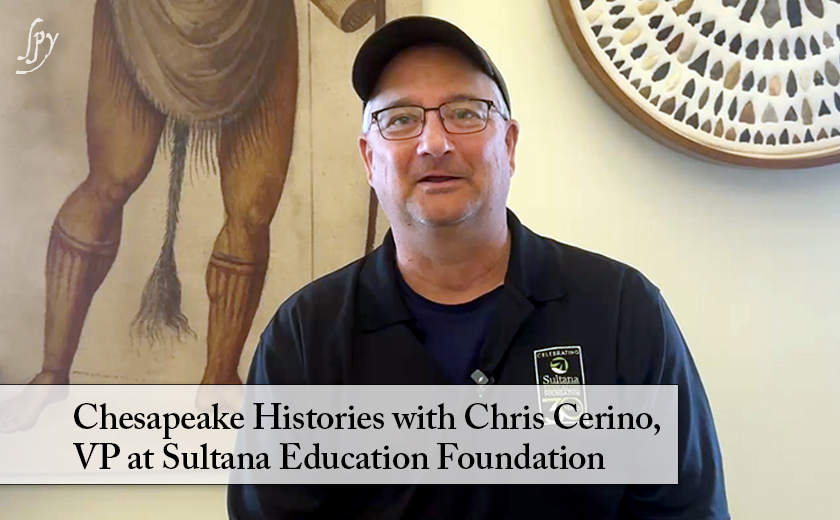Chesapeake Histories: A talk with Sultana Education Foundation VP Chris Cerino
In a innovative collaboration aimed at deepening students’ understanding of the Chesapeake region’s rich but often underrepresented history, the Sultana Education Foundation has launched a compelling educational program focused on the African American experience in the region.
The presentation, piloted during Black History Month for local fifth-grade students, pairs digital storytelling with a real-world exploration of historic Chestertown. The results are dramatic: room-sized images slide smoothly across a painted map of the Bay region on the Sultana building floor during a narration of the image’s historical relevance.
“This is something we’ve wanted to do for a long time,” said Vice President of Sultana Education Foundation Chris Cerino. “The story of African Americans in the Chesapeake is deeply intertwined with the story of the region itself—some of the nation’s most influential abolitionists and civil rights leaders came from the Eastern Shore, including Kent County.”
The presentation was created in partnership with the C.V. Starr Center for the Study of the American Experience with assistance from Deputy Director of the Starr Center Jaelon Moaney, Chesapeake Heartland’s Project Director Darius Johnson, and community historian Airleee Johnson along with contributions from Starr Center Director and historian Adam Goodheart.
“We didn’t just want to tell history—we wanted to tell it right,” Cerino said. “That meant inviting African American community members to help shape and share the narrative.”
Anchored in Sultana’s interactive digital map of the Chesapeake Bay, the slides connect key historical moments to specific geographic locations. From the arrival of enslaved Africans to the era of Jim Crow, and ultimately to the election of Barack Obama, the program aims to acknowledge historical pain, celebrate resilience, and recognize the ongoing journey toward equality.
“The impact of crafting this dynamic experience becomes clearer, and compounds, each time I bear witness to pivotal sparks of discovery in local students and educators alike. Retracing my childhood footsteps, as well as those of the change agents who came before, through innovative tools that usher collective, nuanced strides forward is both grounding and cathartic,” writes Jaelon Moaney, whose family
In a recent exhibit, students were shown landmarks like Jane’s Church, Bethel Church, the Garfield Center (a formerly segregated space), and Sumner Hall—once a meeting place for free African Americans. After the digital component, students toured the streets of Chestertown, learning that many local buildings hold extraordinary stories.
“This isn’t just about the past,” said Cerino. “It’s about seeing how the legacy of struggle and strength shapes where we live today.”
The program also highlights lesser-known but significant elements of African American history in the region—such as the legacy of Black watermen who worked the Bay. “The waterways offered rare opportunities for Black entrepreneurship,” said the presenter. “These were men who owned boats, hired crews, and ran their own businesses at a time when such autonomy was rare for African Americans.”
In addition to this new presentation, Sultana continues to offer a digital map and lecture series on Native American history in the region—another vital narrative often overshadowed in conventional histories.
The Foundation hopes to expand the audience beyond local classrooms. Plans are underway to present the program during community events like Downrigging Weekend and Legacy Day, with groups like Sumner Hall identified as ideal partners for future showings.
“We want the full, honest story of this region told,” said the presenter. “Not just for students, but for everyone.”
The Spy recently spoke with Chris Cerino about the ongoing presentation.
For more about Sultana Education Foundation, go here.
This video is approximately seven minutes in length.



Write a Letter to the Editor on this Article
We encourage readers to offer their point of view on this article by submitting the following form. Editing is sometimes necessary and is done at the discretion of the editorial staff.